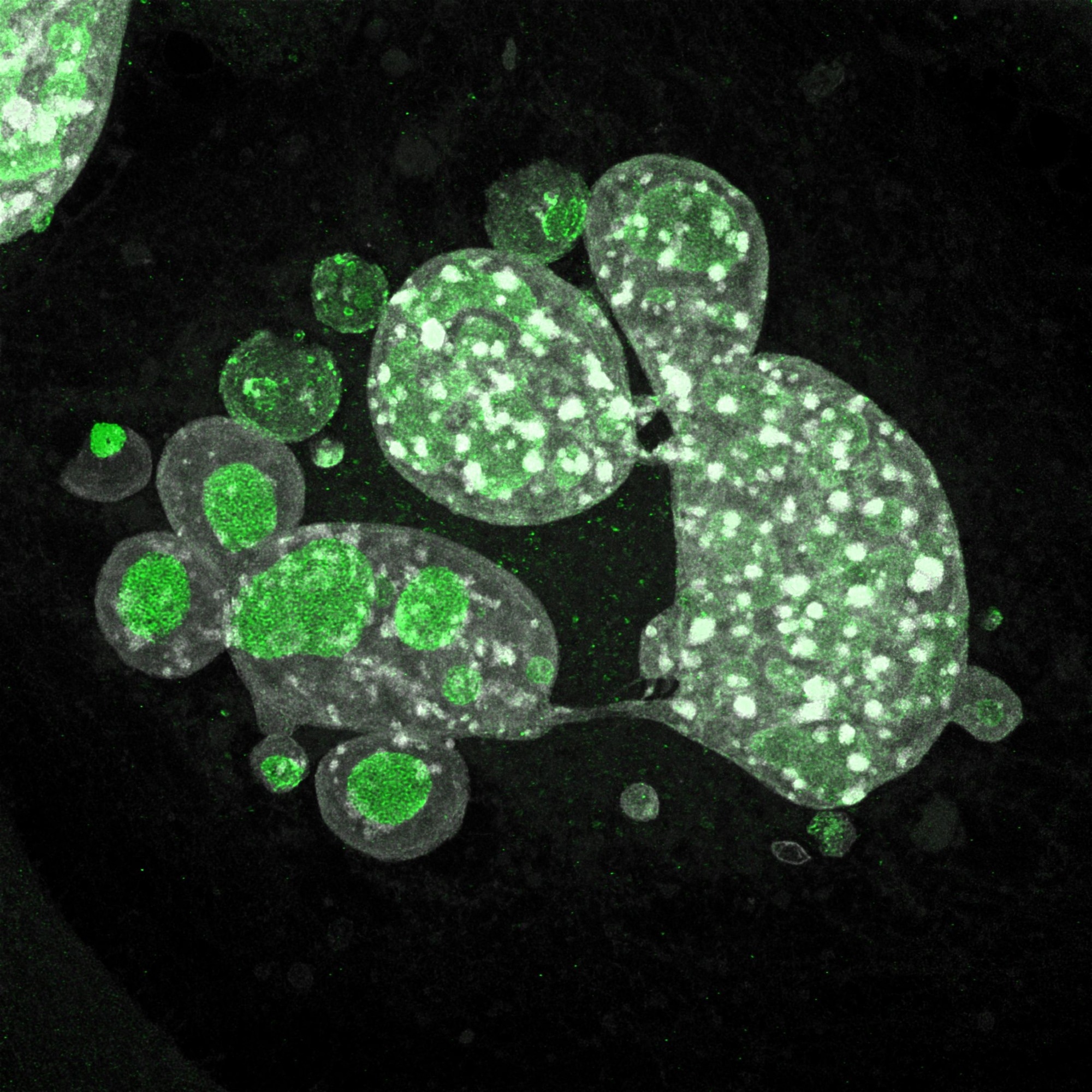The gene that codes for the protein p53 is most likely the most significant factor in defending human cells against DNA-damaging agents that cause cancer. The protein permits cells to repair DNA damage and so prevents the formation of malignancies, earning it the nickname “guardian of the genome.”
 Following exposure to environmental stress, cells carrying p53 inactivation display aberrant subcellular distribution of genomic DNA. This indicates a status of genomic instability. Image Credit: Amelio laboratory.
Following exposure to environmental stress, cells carrying p53 inactivation display aberrant subcellular distribution of genomic DNA. This indicates a status of genomic instability. Image Credit: Amelio laboratory.
Approximately one in every two tumors has p53 inactivation. Cells that lack p53 function become genomically unstable, which means they are more likely to acquire mutations in their DNA, allowing tumors to grow uncontrollably, form metastases, and defy therapy. As a result, the cancer cell grows more aggressive.
But even in the absence of DNA-damaging agents, it is a very challenging task for cells to preserve their genomic (DNA) stability. Scientists assume that p53’s protective role extends to healthy cells. However, the method through which the protein acquired such capacities is unknown.
A research team directed by Ivano Amelio, Professor of Systems Toxicology at the University of Konstanz, and including Marcel Leist, Professor of In-Vitro Toxicology and Biomedicine, has recently shed new light on this mystery.
Cell division is a vulnerable process
Cells—and their DNA integrity—are particularly at risk when they divide, as they duplicate their DNA in the process.
Like in any other replication process, such as photocopying a document or copying a digital file, it is disastrous if the template moves or is changed while the copy is being made. For this reason, genes cannot be transcribed—i.e., used as templates for proteins—while the DNA is being copied.”
Ivano Amelio, Professor, Systems Toxicology, University of Konstanz
If they are transcribed, significant disturbances ensue, perhaps leading to cancer-promoting mutations. The findings of Amelio and his colleagues, which are now the cover story of Cell Reports, reveal that p53 inactivation favors such copy-related damage. They discovered that p53 normally functions by altering cell metabolism to prevent the activation of genomic areas that should be inactive.
The researchers meticulously and minutely analyzed the underlying process. They used the information that some portions of the genome, known as heterochromatin, are packed tightly to stop gene transcription in these areas.
Due to this, these areas are referred to as “silent,” and they are governed by processes known as epigenetic mechanisms, which do not modify the genes themselves but rather the way in which they are packaged and accessible in the genome. One of the most intriguing results of the latest study was that these often inaccessible or “silent” portions of the DNA were transcribed in the absence of p53, which had detrimental consequences.
Crosstalk between p53-driven metabolism and epigenetic integrity
Normally, transcription of these areas of the genome should be kept under tight control, and p53 is the key to keeping their information locked-away by controlling metabolism in a way that renders the heterochromatin inaccessible.”
Ivano Amelio, Professor, Systems Toxicology, University of Konstanz
When p53 is absent, as in p53-inactivated tumors, the cell loses metabolic homeostasis, and information contained in heterochromatin becomes abnormally accessible and transcribed. This produces so much harm that cells enter a condition of genetic instability, which promotes and accelerates cancer progression.
By unraveling this mechanism, we could demonstrate that there is a link between metabolism, epigenetic integrity and genomic stability. In addition, we provided evidence that p53 represents the switch controlling the on/off status of this protection system in the response to environmental stress.”
Ivano Amelio, Professor, Systems Toxicology, University of Konstanz
For a long time, scientists have been puzzled by how p53-inactivated tumors produce genomic instability.
Amelio concluded, “Now we have certainty that, in these tumors, there is a problem at the metabolic level that is reflected in the integrity of the epigenome. Hence, p53 should actually be called guardian of the (epi-)genome. This essential insight can direct research to identify potential new therapeutic strategies for the very frequent forms of cancers that carry p53 inactivation.”
Source:
Journal reference:
Panatta, E., et al. (2022) Metabolic regulation by p53 prevents R-loop-associated genomic instability. Cell Reports. doi.org/10.1016/j.celrep.2022.111568.